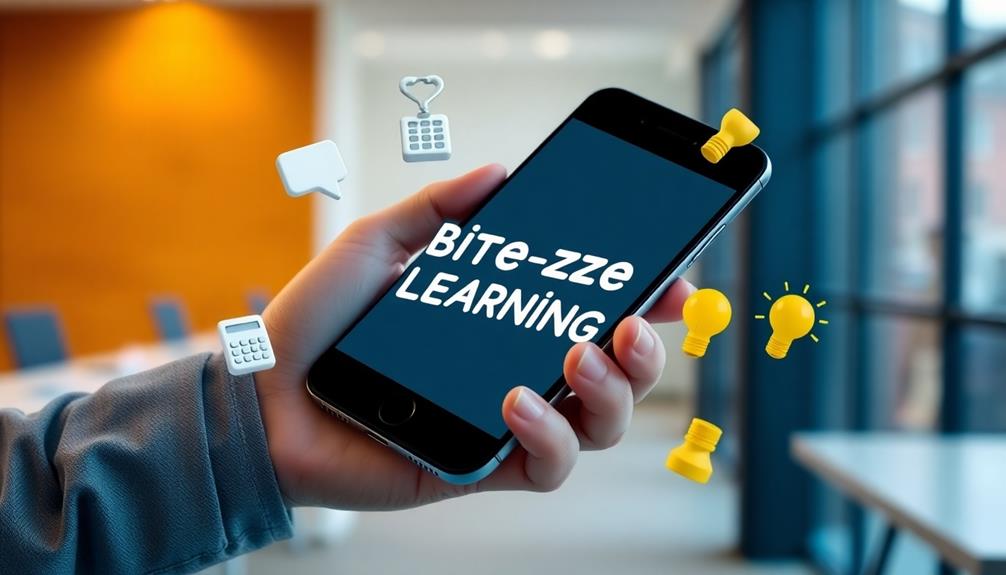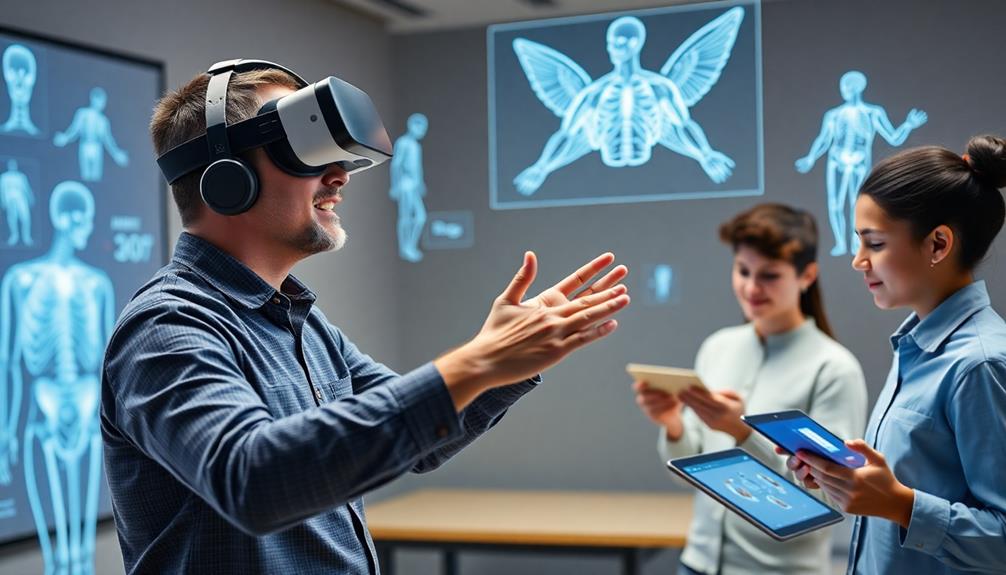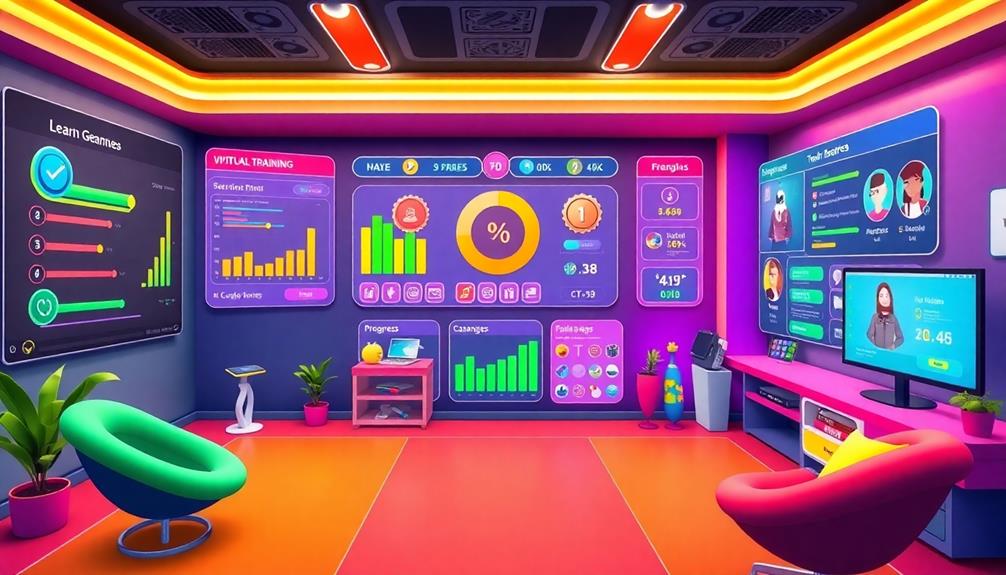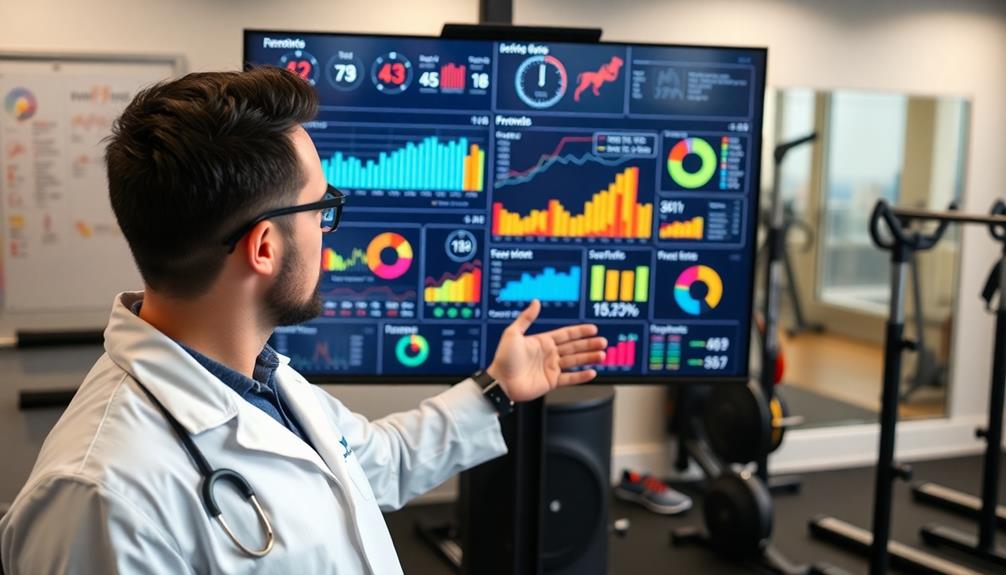To achieve training success, embrace these seven essential strategies: Implement microlearning to break down complex topics into digestible chunks. Personalize training paths to address individual needs and goals. Leverage interactive technologies like VR and mobile apps for engaging experiences. Use gamification techniques to make learning fun and competitive. Encourage peer-to-peer learning through mentorship and knowledge-sharing platforms. Measure and analyze results to track progress and improve effectiveness. Provide continuous learning opportunities to keep skills up-to-date. By adopting these approaches, you'll create a dynamic learning environment that boosts retention, engagement, and overall performance. Discover how these strategies can transform your training program and drive long-term success.
Core Insight
- Embrace microlearning to break complex topics into digestible chunks for better retention and engagement.
- Personalize training paths to address individual needs, preferences, and goals for targeted improvement.
- Leverage interactive technologies like virtual reality and gamification to make training more engaging and effective.
- Implement gamification techniques to encourage friendly competition and maintain learner motivation.
- Encourage peer-to-peer learning through mentorship programs and knowledge-sharing platforms to enhance collaborative learning.
Embrace Microlearning

Microlearning makes training easy by breaking down complex topics into small, digestible chunks. This approach helps you remember information better and keeps you engaged. It's perfect for busy schedules and short attention spans. Microlearning is like taking a daily vitamin – it gives your brain the knowledge it needs in a concentrated, easy-to-absorb form.
To start with microlearning, first figure out what you want to learn. Then, create short lessons that focus on each goal. Use videos, images, or quizzes to keep things fun. Each lesson should only take 3-5 minutes to finish.
Make sure you can access your lessons on any device, so you can learn whenever and wherever you want. Include quick tests to help you remember what you've learned and see your progress. By using microlearning, you'll make training more effective and efficient for your whole team.
Personalize Training Paths

Personalized training paths are essential for effective employee development. They address individual needs, preferences, and goals. To create them, first assess each employee's current skills and knowledge gaps. Then, develop custom learning plans targeting specific areas for improvement.
Use various learning methods like online courses, workshops, and hands-on training. Let employees choose their preferred formats when possible. Set clear goals and milestones for each learner, and track their progress regularly.
Use technology to automate personalization. Learning platforms can recommend relevant content based on an employee's role, interests, and performance. Collect feedback and adjust training paths as needed. This approach ensures your training efforts are targeted, efficient, and more likely to succeed.
Leverage Interactive Technologies

Interactive technologies have changed corporate training for the better. They make training more interesting and help people learn more. Virtual reality can make training feel like real life. Trainees can practice skills in situations that feel real. Games with points and leaderboards can make training more fun and competitive. Quizzes and polls keep people engaged and give quick feedback. Mobile apps let people access training whenever they want. Video conferencing allows live sessions with teachers and other students. AI chatbots can give customized help and answer questions anytime. Using these technologies creates training that works well for different types of learners.
Implement Gamification Techniques

Gamification is a great way to keep employees engaged during corporate training. Use points, badges, and leaderboards to encourage friendly competition and motivate your team. Start by deciding on clear learning goals, then create fun activities to support those objectives.
Show progress with levels or status bars so learners can see how far they've come. This keeps them excited to complete training modules. Include challenges that let them practice new skills and really absorb the material.
Offer virtual or real-world rewards for achievements to recognize hard work and boost participation. Just make sure game elements don't distract from the actual training content. Gamification should make learning more engaging, not replace it entirely.
Encourage Peer-to-Peer Learning

Peer-to-peer learning is a powerful training tool that's often overlooked. Encouraging employees to share knowledge and skills creates a collaborative learning environment that benefits everyone. It's like giving your team a boost, similar to how athletes use tools to improve their performance.
To start peer-to-peer learning, try these strategies:
- Set up mentorship programs
- Create platforms for sharing knowledge
- Have lunch-and-learn sessions
- Encourage team projects
- Let employees shadow each other on the job
These ideas let employees learn from one another's experiences and expertise. Not only does this approach improve skills, but it also strengthens team dynamics and communication.
To make peer-to-peer learning successful, give guidelines for interactions and offer support when needed. Your job is to make these learning opportunities happen, not to control them. By creating a culture of knowledge sharing, you'll have a more engaged and skilled team.
Measure and Analyze Results

Measuring and analyzing results is crucial for effective training programs. Set clear, measurable goals for each session, such as improved performance or increased knowledge retention. While tracking results is important, make sure your training aligns with your company's overall mission and objectives.
Use assessments before and after training to measure immediate learning. Check in with participants later to evaluate long-term retention and application. Collect feedback through surveys or interviews to understand the trainees' experiences.
Look for patterns, strengths, and weaknesses in the data. Use these insights to improve your training content, delivery, and overall approach. Regular evaluation and analysis will help you create the most effective training programs possible.
Provide Continuous Learning Opportunities

Offering ongoing learning opportunities is crucial for your team's growth. Set up regular training sessions, workshops, and skill-building activities to keep everyone engaged. Encourage your team to stay current with industry trends through subscriptions to relevant publications or online courses. If some resources are unavailable, find alternative learning options to ensure continuous development.
Start a mentorship program where experienced team members guide newer employees. This improves skills and promotes knowledge sharing. Consider using a learning management system (LMS) to track progress and provide personalized learning paths.
Recognize and reward employees who actively pursue professional development through promotions, bonuses, or public acknowledgment. By prioritizing continuous learning, you'll create a culture of growth and adaptability, keeping your team competitive in an ever-changing business world.
Frequently Asked Questions
How Can We Address Resistance to Change in Established Training Programs?
You can address resistance by involving employees in the process, clearly communicating benefits, providing adequate support, and implementing changes gradually. Acknowledge concerns, offer incentives, and showcase early successes to build confidence in the new program.
What's the Ideal Trainer-To-Trainee Ratio for Optimal Learning Outcomes?
You'll find the ideal trainer-to-trainee ratio varies based on the subject and training type. Generally, aim for 1:10-15 for interactive sessions and 1:20-30 for lectures. Smaller ratios allow more personalized attention and better learning outcomes.
How Do Cultural Differences Impact Training Effectiveness in Global Organizations?
You'll find cultural differences greatly affect training effectiveness globally. They influence communication styles, learning preferences, and expectations. To succeed, you must adapt your training methods, considering local customs, values, and perspectives in each region you operate.
What Strategies Help Retain Knowledge After the Training Program Ends?
To retain knowledge post-training, you'll benefit from regular practice, spaced repetition, and applying skills to real-world scenarios. Create a personal action plan, engage in peer discussions, and use digital tools for ongoing reinforcement and self-assessment.
How Can We Align Training Initiatives With Long-Term Organizational Goals?
You'll need to align training with your company's vision. Identify key skills and competencies essential for future success. Develop programs that bridge current gaps and prepare employees for upcoming challenges. Regularly review and adjust your training strategy.

